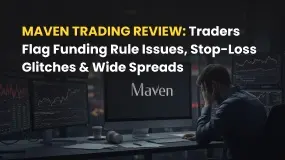简体中文
繁體中文
English
Pусский
日本語
ภาษาไทย
Tiếng Việt
Bahasa Indonesia
Español
हिन्दी
Filippiiniläinen
Français
Deutsch
Português
Türkçe
한국어
العربية
Major Forex Currency Pairs: Understanding Their Features and Behavior
Abstract:Having a thorough grasp of the primary currency pairs is essential for individuals involved in Forex trading and investment. These pairs hold significant importance as they comprise the most influential economies globally and have the most substantial impact on market activities.

Having a thorough grasp of the primary currency pairs is essential for individuals involved in Forex trading and investment. These pairs hold significant importance as they comprise the most influential economies globally and have the most substantial impact on market activities.
This enlightening article sheds light on the characteristics and behaviors of these major currency pairs, widely recognized as the Majors in the Forex market. By exploring this information, interested individuals can gain valuable insights into navigating this dynamic and unpredictable market.
What is the definition of currency pairs?
Before we delve into the details, it's essential to understand the concept of currency pairs. In the Forex market, traders trade currency pairs, buying one currency while selling another. A code of three letters represents each currency pair; the initial code represents the base currency, while the second code represents the quote currency. For example, the currency pair EUR/USD expresses the Euro (EUR) concerning the US Dollar (USD).
The major currency pairs
In the Forex market, traders trade several currency pairs, but some consider the major ones due to their high liquidity and volatility. See below the major currency pairs and their characteristics.
EUR/USD (Euro/US Dollar)
The EUR/USD currency pair is the most heavily traded and accounts for most transactions in the Forex market. In this currency pair, the Euro is the primary currency, while the US Dollar is the secondary currency. Economic data emanating from both the European Union and the United States, as well as announcements from the Federal Reserve, often abbreviated as the Fed, and the European Central Bank, commonly referred to as the ECB, primarily shape the behavior of this pair. Traders recognize it for its high liquidity and tendency to align with global market trends.
USD/JPY (United States Dollar/Japanese Yen)
In the Forex market, traders actively trade the USD/JPY pair, with the US Dollar serving as the primary currency and the Japanese Yen as the secondary currency. Economic indicators from Japan and the United States and decisions from the Bank of Japan (BOJ) and the Federal Reserve influence this pair. USD/JPY is famous for its volatility and sensitivity to geopolitical events.
GBP/USD (British Pound/US Dollar)
The GBP/USD pair represents the British Pound against the US Dollar. Economic indicators from the United Kingdom and the United States and decisions made by the Bank of England (BoE) and the Federal Reserve significantly influence this pair. GBP/USD is known for its volatility and tendency to exhibit sharp movements in response to political and economic events that impact the United Kingdom.
USD/CHF (US Dollar/Swiss Franc)
The USD/CHF pair symbolizes the US Dollar versus the Swiss Franc. The performance of this pair is shaped by the monetary strategies of the Swiss National Bank (SNB) and the Federal Reserve, in addition to the economic metrics of Switzerland and the United States. USD/CHF is renowned for its inclination to move inversely to EUR/USD, rendering it an intriguing choice for diversifying a portfolio.
USD/CAD (US Dollar/Canadian Dollar)
The USD/CAD pair depicts the US Dollar concerning the Canadian Dollar. Economic indicators from Canada and the United States, along with decisions made by the Bank of Canada and the Federal Reserve, shape the behavior of this pair. The behavior of USD/CAD correlates with oil prices due to the importance of the energy sector in the Canadian economy.
While each currency pair possesses its characteristics, the major currency pairs in Forex share certain standard features.
Liquidity
Major currency pairs are known for their high liquidity, characterized by a large trading volume and ease of market entry and exit. This liquidity allows traders to open and close positions quickly without significant price impact.
Volatility
Their volatility characterizes the major currency pairs. Price movements can be fast and significant, offering profit opportunities and increasing the risk of trading. Various factors, such as economic, political, and geopolitical events, influence volatility.
Economic and political influences
The major currency pairs are sensitive to news and economic and political events in the countries involved. Economic indicators, central bank decisions, government policies, and global events can significantly impact the movements of these pairs. Keeping up with relevant news and developments is critical to making informed decisions.
Understanding the characteristics and behavior of the major currency pairs in Forex is crucial for successful trading in this market. In the Forex market, EUR, JPY, GBP, CHF, and CAD, trading in parity with the USD, are among the most traded currency pairs, representing major global economies. Each currency pair has its peculiarities, but economic and political factors influence all of them, and they all share high liquidity and volatility. As a trader or investor, closely monitoring relevant information and being ready to act according to market changes is essential. Consistently implement effective risk management techniques and utilize technical and fundamental analysis tools to arrive at well-informed decisions.

Disclaimer:
The views in this article only represent the author's personal views, and do not constitute investment advice on this platform. This platform does not guarantee the accuracy, completeness and timeliness of the information in the article, and will not be liable for any loss caused by the use of or reliance on the information in the article.
Read more

Maven Trading Review: Traders Flag Funding Rule Issues, Stop-Loss Glitches & Wide Spreads
Are you facing funding issues with Maven Trading, a UK-based prop trading firm? Do you find Mavin trading rules concerning stop-loss and other aspects strange and loss-making? Does the funding program access come with higher spreads? Does the trading data offered on the Maven Trading login differ from what’s available on the popular TradingView platform? These are some specific issues concerning traders at Maven Trading. Upset by these untoward financial incidents, some traders shared complaints while sharing the Maven Trading Review. We have shared some of their complaints in this article. Take a look.

BTSE Review: Ponzi Scam, KYC Verification Hassles & Account Blocks Hit Traders Hard
Have you lost your capital with BTSE’s Ponzi scam? Did the forex broker onboard you by promising no KYC verification on both deposits and withdrawals, only to be proven wrong in real time? Have you been facing account blocks by the Virgin Islands-based forex broker? These complaints have become usual with traders at BTSE Exchange. In this BTSE review article, we have shared some of these complaints for you to look at. Read on!

Inzo Broker Review 2025: Is It Legit or a High-Risk Gamble?
When you ask, "Is inzo broker legit?" you want a clear, straight answer before putting your money at risk. The truth about Inzo Broker is complicated. Finding out if it's legitimate means looking carefully at its rules, trading setup, and most importantly, the real experiences of traders who have used it. The broker shows a mixed picture - it has official paperwork from an offshore regulator, but it also has many user warnings about how it operates. This review gives you a fair and fact-based investigation. We will break down all the information we can find, from company records to serious user complaints, so you can make your own clear decision.

INZO Broker No Deposit Bonus: A 2025 Deep Dive into Its Offers and Risks
Traders looking for an "inzo broker no deposit bonus" should understand an important difference. While this term is popular, our research shows that the broker's current promotions focus on a $30 welcome bonus and a 30% deposit bonus, rather than a true no-deposit offer. A no-deposit bonus usually gives trading funds without requiring any capital from the client first. In contrast, welcome and deposit bonuses often have rules tied to funding an account or meeting specific trading amounts before profits can be taken out. This article gives a complete, balanced look at INZO's bonus structure, how it operates, and the major risks shown by real trader experiences. Read on!
WikiFX Broker
Latest News
Forex Expert Recruitment Event – Sharing Insights, Building Rewards
Admirals Cancels UAE License as Part of Global Restructuring
Moomoo Singapore Opens Investor Boutiques to Strengthen Community
OmegaPro Review: Traders Flood Comment Sections with Withdrawal Denials & Scam Complaints
An Unbiased Review of INZO Broker for Indian Traders: What You Must Know
Is Fyntura a Regulated Broker? A Complete 2025 Broker Review
PINAKINE Broker India Review 2025: A Complete Guide to Safety and Services
Is Inzo Broker Safe or a Scam? An Evidence-Based Analysis for Traders
Is Uniglobe Markets Legit? A 2025 Simple Guide to Its Safety, Services, and User Warnings
Is Forex Zone Trading Regulated and Licensed?
Currency Calculator



